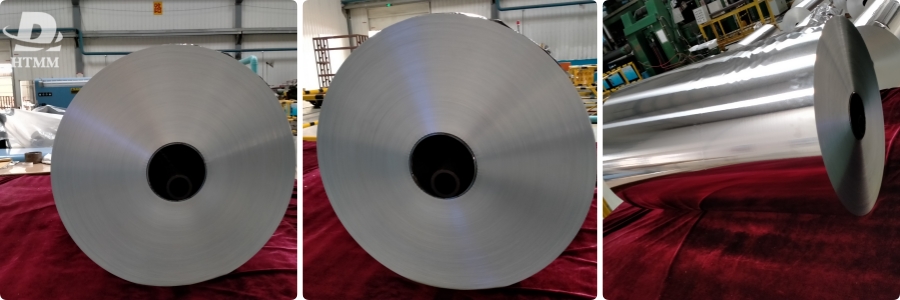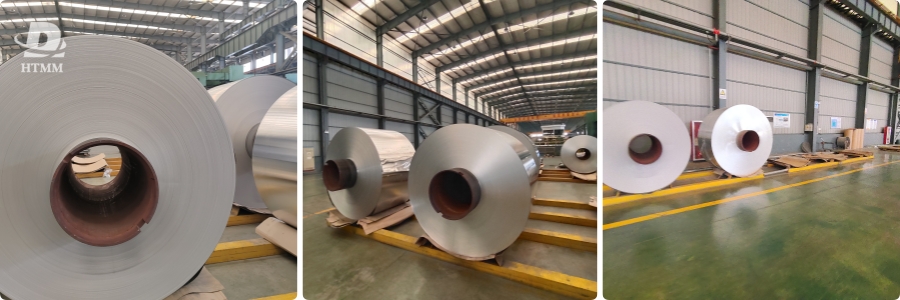What is the application of aluminium in food packaging?
Numerous industries have made extensive use of aluminum and its alloys. Is aluminium foil a food packaging material?Food packaging is one of its main application areas because of its special qualities that make it ideal for this use. This essay will go into great detail on the several applications of aluminum in food packaging and the reasons it has become the preferred material.

Properties of Barriers
Aluminum's superior barrier qualities are one of the main factors contributing to its effectiveness as food packaging material.Is aluminium foil a food packaging material? It offers an impenetrable shield against elements that can deteriorate food, such as light, gasses, moisture, and microorganisms.
Moisture Barrier: Among all materials, aluminum foil has one of the lowest rates of water vapor transmission. Is aluminium foil a food packaging material?This keeps freshness intact by preventing moisture from escaping or infiltrating packed items from the outside.
Gas Barrier: It also forms a very strong barrier that keeps out gasses like carbon dioxide and oxygen. This is useful for things like keeping food from oxidizing or losing carbonated bubbles in drinks.
Aroma/Flavour Barrier: By keeping aromatic components and tastes inside meals from escaping or becoming contaminated by outside sources, foil helps preserve these ingredients.
Light Barrier: Foods that are susceptible to deterioration from UV or visible light exposure are shielded from it by the opaque nature of aluminum packaging.
Aluminum is specially suited for efficiently preserving the quality, flavor, and nutritional value of a wide range of foods due to its multi-barrier performance alone.
Forming Characteristics
Aluminum has good forming qualities in addition to barrier qualities, which enable fabrication into a variety of container shapes.
Drawability: The great drawability of aluminum enables the production of complicated shapes using cold forming processes without the need for work hardening. Easy-open can and lid designs are made possible by this.
Heat Resistant: Foods and beverages can be hotly filled into packaging because formed components can tolerate sterilizing temperatures of up to 200°C.Is aluminium foil a food packaging material?
Sturdy Surface Treatments: Painting, printing, and lacquering aluminum surfaces can be made to look good and provide protection for packing.
Recyclable: When an aluminum product reaches the end of its useful life, it can be recycled and used to make new items.Is it safe to pack food in aluminium foil?
Compared to other barrier materials, aluminum's pliable properties allow it to be fashioned into a variety of efficient rigid, semi-rigid, and flexible packaging solutions.
Adaptable Packaging Options
Is it safe to pack food in aluminium foil?Aluminum provides adaptable and efficient packaging solutions for a variety of food types by fusing barrier properties and formability:
Cans
Because they are portable, aluminum cans are quite popular for groceries, beverages, alcohol, and other items. Easy-open ends and other features make access easier while preserving carbonation. The interior of the thin laminated foil improves barrier and dissolving resistance, making it suitable for direct food contact.
Foil: When wrapping a variety of foods, aluminum foil acts as a barrier against light, gas, and moisture. To extend shelf life, primary or secondary packaging of meats, cheeses, baked goods, etc., is a common application.
Trays
The food delivery, retail food display, and catering industries can benefit from the convenience of thermoformed aluminum trays and containers. Strength, stackability, and resistance to sterilization temperatures are among the benefits.
Tubes: Aluminum tubes provide portability and a barrier defense against contamination over time for goods like pastes, gels, and creams.
Rolls or pouches made of aluminum-plastic laminate that effectively hold liquids, sauces, and dressings. They take advantage of film packaging's formability and foil's ability to block gas and moisture.What foods are packaged in aluminum foil?
Lids Aluminum serves as a strong oxygen and moisture barrier for a variety of rigid and flexible food containers, such as cups and tubs, giving them a longer shelf life.What foods are packaged in aluminum foil?
As a result, the variety of formats makes it easier to package practically any kind of food while maintaining quality standards, which is a major factor in aluminum's widespread appeal throughout the world.
Better Extension of Shelf Life
Aluminum packaging enhances shelf life by creating a strong barrier against elements that cause deterioration. Among the illustrative advantages are:
Dairy: The shelf life of UHT milk can be increased from 7 to more than 90 days by using cartons or aluminum foil wrapping.
Baking: Compared to 2 weeks uncovered, cakes, muffins, and other baked goods can stay fresh for 6–9 months when wrapped.
Meat: The refrigerator life of beef, pork, or poultry can be extended from 5-7 days to over 2 weeks by using vacuum-sealed aluminum trays or bags.
Fish, prawns, and other seafood can be kept frozen for a year in aluminum foil or trays with oxygen absorbers, as opposed to three months in other materials.
Cheese: When kept in vacuum-sealed aluminum containers, cheese lasts up to 3-6 months instead of 2-4 weeks.
Aluminum's remarkable barriers thereby translate to greatly extended usability windows for a variety of perishables by delaying quality deterioration, whether for room temperature, refrigerated, or frozen storage. This reduces monetary losses brought on by waste.
Enhanced Food Safety
In addition to its effects on shelf life, What are the disadvantages of foil food packaging?aluminum packaging improves food safety in a number of ways as compared to non-barrier options like cardboard or plastic films:
Hermetic sealing: To accomplish total container closure and avoid microbiological or cross-contamination, aluminum lidding, trays, etc., can be heat sealed.
Oxygen Depletion: To prevent disease growth, foils or lidding that have oxygen scavengers actively remove residual atmosphere to less than 0.01%.
Moisture Control: Proper control of moisture in the packaging domain prevents the growth of microorganisms.
Thermal Stability: Aluminum is currently capable of withstanding recommended heat treatments of up to 120°C when used to commercially sterilize low-acid canned foods.
Barrier Protection: Throughout the supply chain, the substance guards the contents of packages against outside contamination sources until the end users open them.
When taken as a whole, this lowers the possibility of foodborne disease outbreaks connected to tainted food contact materials and promotes compliance with the rapidly changing worldwide food safety and traceability requirements.
Advantages for the Environment and Economy
In addition to its superior performance, aluminum packaging has significant environmental advantages over certain alternatives.What are the disadvantages of foil food packaging?
Recyclable: In many markets, more than 75% of aluminum cans, foil, and other food packaging are recycled each year, maintaining their material qualities across several life cycles.
Lightweighting: Downgauging in comparison to other materials is made possible by thin gauges and formability, which lowers the embodied energy and transport carbon footprint per unit.
Durable: Compared to single-use products that must be thrown away quickly, a longer shelf life spread across numerous recyclable uses utilizes fewer packaging resources overall.
Refillables: Compared to single-trip containers, certain aluminum bottles or kegs make refilling and reuse easier with less input required every usage cycle.
Economic Incentives: Aluminum packaging supports circular business models through trash diversion programs and produces jobs locally. It is a recycled commodity valuable to downstream industries.
Because of these qualities, aluminum is becoming a more economically and environmentally desirable option than some other materials that are encountering sustainability issues because they are non-renewable, have limited capacity to be recycled, or have higher lifespan energy consumption profiles.

Technologies for Barrier Coatings
Although aluminum is a useful food barrier on its own, surface treatment improvements have further increased its potential. Protective or selective barrier coatings are prime examples:
Conversion Coatings: Anodizing produces a porous oxide layer that enhances foil or molded package materials' printability and resistance to corrosion. Pores can be sealed using dyes.
PVdC: Aluminum's gas blockading is preserved while a selective water and grease barrier is formed by a vapour-deposited acrylic resin. This makes it possible to package high-moisture goods that were previously limited to plastic.
EVOH: For ultra-low residual O2 applications like MAP, ethylene vinyl alcohol copolymer coatings on foil or film significantly increase the oxygen barrier when compared to bare aluminum. They are on par with glass.
PET/ALU/PET: A layered structure that combines the best qualities of all materials for effective rigid containers, lidding stock, etc. is made of polyethylene terephthalate internal and external layers with an aluminum core.
SiOx Cycles: For a variety of delicate food applications, alternative inorganic cycles such as silicon-oxide applied via PECVD produce ultra-barriers against moisture and gasses while preserving chemical inertness.
By addressing specific flaws or optimizing performance domains as a substrate, aluminum enhances packaging functionality through such surfacing technologies, opening up even more application options. To create new coatings and broaden its application, R&D continues to be active.
Acceptance by Regulation
The regulatory recognition of aluminum's food-grade status, backed by substantial research, is the reason for the widespread and increasing demand for this type of packaging:
FDA: All food kinds are considered to be compatible with food-contact rules when clean and appropriately coated aluminum foils, containers, and closures meet these standards, with the exception of acetic acid above 25% and alcohol above 90%.
EU: The European Food Safety Authority has determined that there are no hazards associated with typical low-level exposures to aluminum used in food contact. Additionally, recycling is allowed without restrictions.
Japan: Following toxicity and migration analyses, the Ministry of Health in Japan has approved the highest use of aluminum in packaged goods.
Global Standards: Food-grade materials, coatings, and processing adhere to international composition and purity standards thanks to testing procedures such as ISO, CEN, and ASTM.

